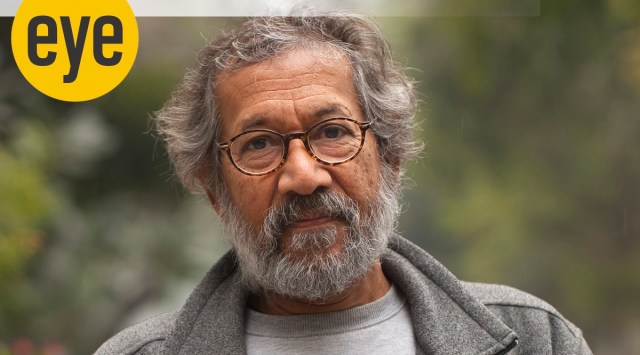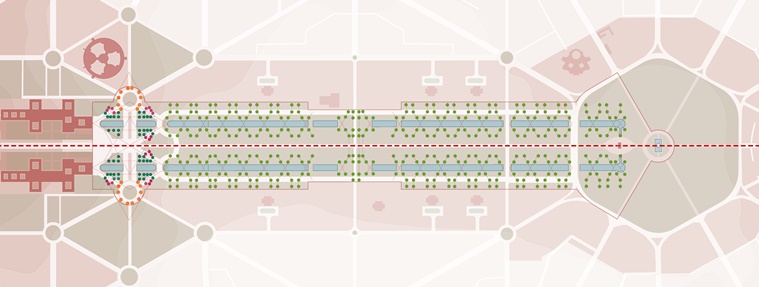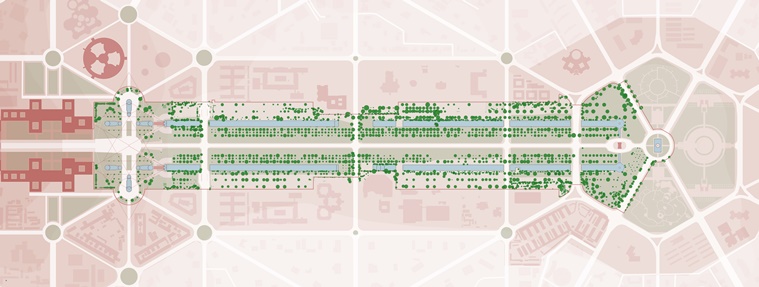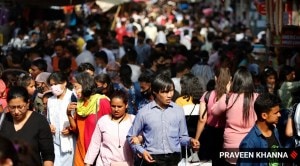- India
- International
‘It’s a lesson in how not to be sensitive to public opinion’: Pradip Krishen
From a petitioner to an advisor, naturalist Pradip Krishen on the Central Vista Redevelopment Project and the need to marry heritage with pragmatism
 Naturalist-author Pradip Krishen (Photo Courtesy: Pradip Krishen)
Naturalist-author Pradip Krishen (Photo Courtesy: Pradip Krishen)Naturalist-author Pradip Krishen, 72, has been advising the design committee of the Central Vista Redevelopment Project on tree planting. In this interview, he speaks about the original Lutyens’ tree scheme and strategies for increasing the green cover along Rajpath.
Edited excerpts:
What are your thoughts on the Central Vista Redevelopment Project?
I was born here, to a family whose forebearers moved to the Old City in the 1880s. So, Delhi certainly is home. My father worked for many years in South Block, so the Secretariat figured in my childhood.
I’m very sad about what’s happening because it’s taking place by completely bypassing public consultation. It’s wrong, frightening and is dressed up in a false kind of legitimacy. It’s typical of ‘Modi’s Method’ — power your way through, right or wrong (mostly wrong) and not care a kid’s popsicle about what anyone thinks. But this has become the harsh tenor of his regime. And the only consolation is that history will not judge him kindly.
I completely agree with the critics of the project. It’s why I became a petitioner against it in the Supreme Court.

But you are an advisor currently. What made you change your mind?
I wanted to influence what would happen, instead of sitting back and railing at a plan that might do a lot of harm.
When you revamp a major boulevard tree scheme like this one, you’re reaching into a time that stretches at least a century hence, long after this government will have faded to a dim memory. I felt it’s really important to think through a scheme we’re going to have to live with for a long, long time and do whatever I possibly can to make it better.
Starting in September 2020, I sat in on Zoom sessions. I found myself on a good wavelength with Prabhakar Rao, a horticulture consultant from Bengaluru (on the design committee). I was sure I had done the right thing. We would have ended up with a very different plan if I hadn’t come in.
What were your suggestions?
I was worried in the beginning about the key issue of water. Rajpath is an extremely thirsty microhabitat. The huge expanse of lawns and the jamun — technically, rai-jamun — trees are enormous water guzzlers. The first set of suggestions I sent the design team was about alternatives to lawns.
Nothing much came of it. Part of the problem is that we haven’t developed good alternatives to close-cropped doob (grass) lawns in this country.
 All trees marked out in Lutyen’s plan along Rajpath and Vijay Chowk. (Photo courtesy HCP Design and Project Management Pvt. Ltd)
All trees marked out in Lutyen’s plan along Rajpath and Vijay Chowk. (Photo courtesy HCP Design and Project Management Pvt. Ltd)
We then started looking at photographs of Lutyens’ original tree scheme and we were in for some surprises. We could see very clearly in an aerial photo from the 1940s that the old scheme was very spare, very tight, with only 386 rai-jamun trees set in a complicated but interesting pattern of diagonals, arranged in five rows on either side of Rajpath.
When we plotted all the rai-jamuns there today, it became clear that the CPWD (Central Public Works Department) had completely lost track of the original plan and had added in heaps of rai-jamuns in what it misread as empty spaces in each row. Lutyens’ ‘diamond plan’ had been completely subverted! An original palette of 386 trees has been carelessly expanded to 1,200 or so, not to speak of some 2,700 other trees which were never intended to be part of the formal plan for this area.
This was our first big hurdle — how to find a sensible way of marrying heritage and pragmatism. Reverting strictly to the original scheme would mean losing nearly 800 rai-jamuns and that was unthinkable. So, the question was, could we find an elegant way of ramping up the original diamond pattern so that it became a lot richer, numerically?
I think it was Rao’s idea to ‘shiver the scheme’ and plot three rai-jamuns at each end-point of the Xs for every one in Lutyens’ scheme. A little clever manipulation of the geometry gave us 1,295 rai-jamuns instead of just 386. So, for all those people who have the impression we’re going to lose all the rai-jamun trees along Rajpath, I’m happy to say that’s not so.
 All trees marked out in the same space in the latest survey. (Photo Courtesy: HCP Design and Project Management Pvt.
All trees marked out in the same space in the latest survey. (Photo Courtesy: HCP Design and Project Management Pvt.Ltd)
What about Vijay Chowk? How has the tree plan worked out for this space?
Vijay Chowk’s tree scheme is curious, very different from Rajpath’s, with just three species of trees — maulshrees, chir pines and topiarised bistendus. It’s a really strange mix. Maulshrees are large, evergreen trees with dense shady canopies, from regions a lot more moist than Delhi’s.
But it’s the chir pines that stand out as a real oddball choice! They grow on hot, degraded, south-facing slopes in the lower Himalaya and while they do survive in Delhi, just about, I can’t imagine why whoever chose them, planted them here in the first place. They look terribly out of place.
The bistendus are another matter altogether. They are the only trees native to Delhi’s dry ecology that was used for ornamental purpose in Lutyens’ planting schemes.
 The bistendu is native to Delhi’s dry ecology, seen usually as ornamental trees in Lutyens’ planting schemes (Photo courtesy Pradip Krishen)
The bistendu is native to Delhi’s dry ecology, seen usually as ornamental trees in Lutyens’ planting schemes (Photo courtesy Pradip Krishen)
In the draft plan, everything is being retained in Vijay Chowk’s tree plan pretty much as it is.
But here’s a fascinating tidbit. Rao showed us that the bistendus are arranged in a truncated hexagon pattern, like a dovetail joint. Apparently, this is a symbol from sacred Masonic geometry and raises the interesting question: Was Lutyens possibly a Freemason who left behind a little secret signature in his Central Vista arrangement? A wink and a message to other Freemsons, perhaps?
Well, he’s been found out now! Kudos to Rao for a brilliant bit of sleuthing.
What about all the other species of trees on Rajpath?
There’s a lot of them — 2,751 other kinds of trees have been planted by the CPWD. In an ideal world, maybe they should all be swept away. But we didn’t bite the bullet. Our draft plan mandates that only 26 will need to be removed or transplanted to make way for public conveniences. It’s a very small price to pay for a scheme that restores sense and beauty to the city’s favourite lawns.
When you add all the figures up, we will end up with a total of 4,014 trees where there’s 3,931 trees standing in today’s survey.
It’s important to explain that we devised a strategy of long-term replacement as an alternative to removal. We’ve said that any new species slated to replace a rai-jamun tree will only come in when the rai-jamun starts to wind down and die, even if it takes 30 years or more. This is an important aspect of the draft tree plan — long-term replacement. I’m hoping it will work. The danger is that the CPWD could lose track (again) of what is intended to happen.
What do you think of the massive felling and transplanting of trees at the Indira Gandhi National Centre for the Arts (IGNCA)?
I wasn’t part of the discussion or the planning for IGNCA’s grounds.
I have no confidence at all in anyone’s ability to successfully transplant those trees. The figs — and there’s quite a few of them — have surface roots and might just survive if they’re handled carefully. The rest are likely doomed; it’s awful.
Is it true that nearly 2,000 new trees will be planted in the Central Vista area?
No! There’s only 52 trees being brought in, in only two species. This is probably an area where I might have proved most useful to the tree committee — in selecting species of trees to potentiate the scheme.
This preference for evergreen species goes completely against my grain! Delhi doesn’t have an ecology that is suited to evergreen or semi-evergreen trees. It’s completely unsustainable. I was keen to convert the committee to my way of thinking, which is: don’t shy away from deciduous trees. Being deciduous is how a native Delhi tree adapts to its natural dry ecology by dropping its leaves. It then bursts forth with new leaves in glorious tints of reds and cerise in early spring! Look at our magnificent pilkhans and the ravishing kosams, the khirni, bistendu, and bilangana!
How much of the look and feel of the Central Vista Avenue will change with regards to the planting and overall design?
The 52 trees will enhance the visual appeal of the tree scheme, not in the rows immediately adjacent to Rajpath, but set further back. They will also help to make the planting scheme a little more sustainable in terms of water-use. They were chosen with an eye to form, habit, colour, texture and how they resonate with each other.
Eventually, I feel it’s a scheme we can be happy with. I certainly am.
But, much of the open spaces will be inaccessible to common people since the whole area will become a high security zone, given the building profiles.
I don’t get the impression that Rajpath’s lawns are going to be off limits for people and strollers. But who knows, it could become a victim to an administrative decision or an over-zealous security firman, and that will be really tragic. Luckily, administrative decisions can change. (PM Narendra) Modi won’t be around forever.
 Nearly 386 rai-jamun trees were set in a complicated pattern of diagonals in Lutyen’s original tree scheme. Currently, there are over 1,200 rai-jamun trees along Rajpath. (Photo courtesy Pradip Krishen)
Nearly 386 rai-jamun trees were set in a complicated pattern of diagonals in Lutyen’s original tree scheme. Currently, there are over 1,200 rai-jamun trees along Rajpath. (Photo courtesy Pradip Krishen)
With all the heat gain from the new buildings, will the tree plan keep temperatures low in the area?
It’s a real worry. All the demolishing and building and transporting of material alongside Rajpath will add up to a very significant environmental cost. I don’t know how to estimate it, but I have no doubt it is going to impact the temperature and ambience of this zone. I don’t think that the quantum of heat gain will be offset by anything we’re doing with the trees. We’re not making any radical changes, anyway.
We also need to worry about the downside effects of having all these office blocks and people converging together. I saw a dire traffic assessment about what’s likely to happen to many of the roads leading into or abutting this area. It’s really frightening. They’re talking about converting four-lane roads to six- and nine-lane roads. The only way they’ll be able to do this is by cutting down all the trees on roads like Ashoka Road and Shershah Road. Is this going to be part of the hidden cost that nobody’s counting today?
Is there a better way to prepare briefs for future urban projects?
Yes, of course! The Central Vista Redevelopment project is like an object lesson in how ‘not’ to be sensitive to public opinion and informed comment, especially at a time that feels every bit like a natural disaster.
Towards future climate change disasters, how efficient will the redevelopment be?
I think a really meaningful plan in an ecological, climate change sense would have explored and worked out some way of addressing the water issue. It’s really vital. But there will be time to experiment and learn lessons and evolve protocols about things like lawn alternatives. We’re way behind the rest of the aware world in this regard.
We’re also severely hobbled by the state of our municipal horticulture establishments — who can trust them with showing us the way? Unfortunately, the landscape architecture establishment isn’t showing us the way either. It still holds up Dubai-style palmscapes with drip irrigation as a model of appropriate landscape gardening, like the stuff you see in all our big airport precincts. They have a long way to travel to become sensitive to climate change.
We’re in a bit of no-man’s land in this regard.
There is also the New India Garden and the National Biodiversity Arboretum planned. Could you tell us more?
Please don’t ask me to comment on the CPWD’s New India Garden! I’ve seen sketch designs and it exemplifies the extreme poverty of municipal horticulture in India today.
The Biodiversity Arboretum is a patch of 50 acres inside Rashtrapati Bhavan, tucked into the curve of Mother Teresa Marg. I proposed that they re-think the plan in favour of a carefully thought-through ecological restoration of that portion of the Ridge Forest that lies within the area.
Nothing’s been worked out yet. I sense a great opportunity. I’d love a chance to create and celebrate the natural biodiversity of the Ridge forest, by restoring it and providing immersive ways of understanding why it’s so special. But it’s still a pipedream.
Must Read
Apr 19: Latest News
- 01
- 02
- 03
- 04
- 05






































